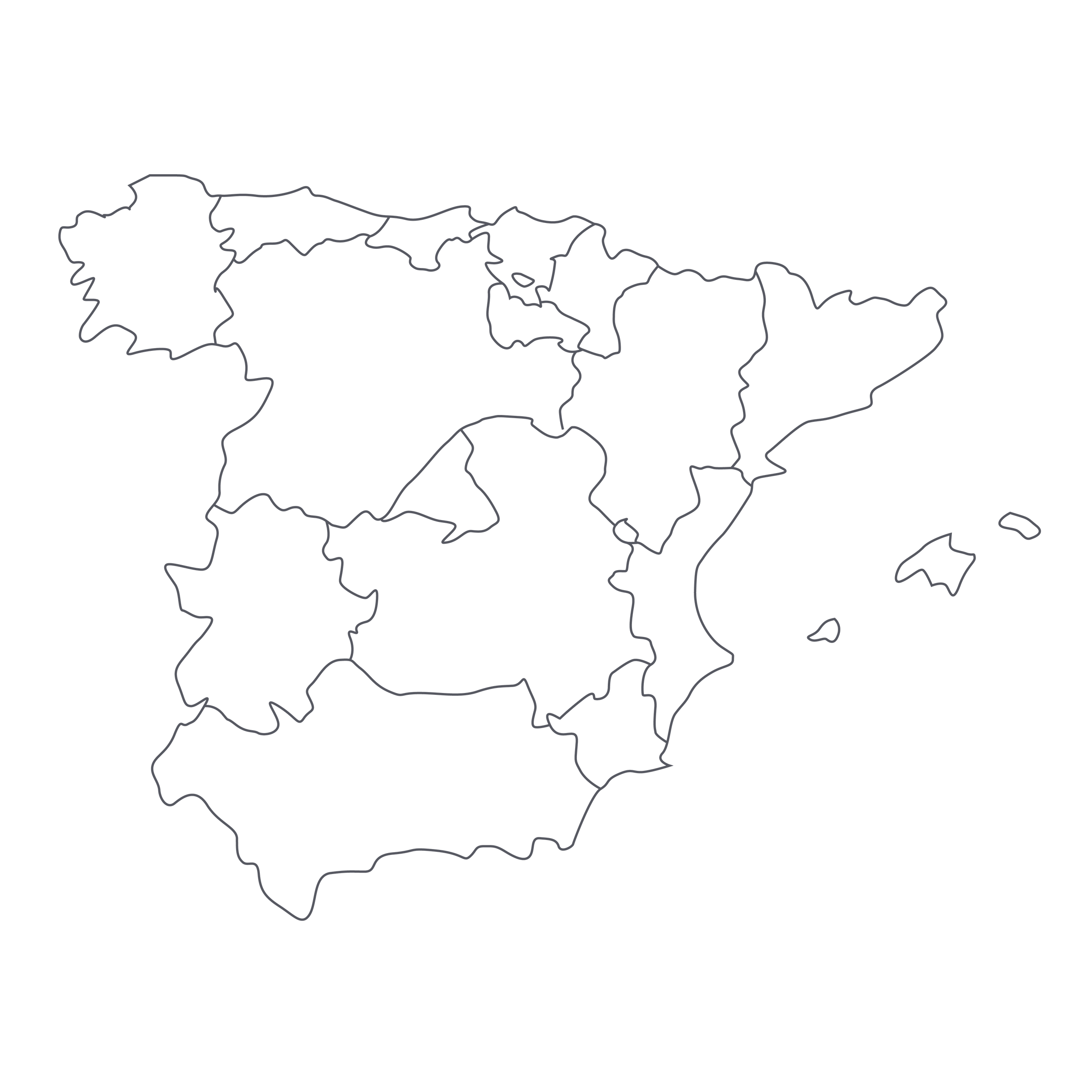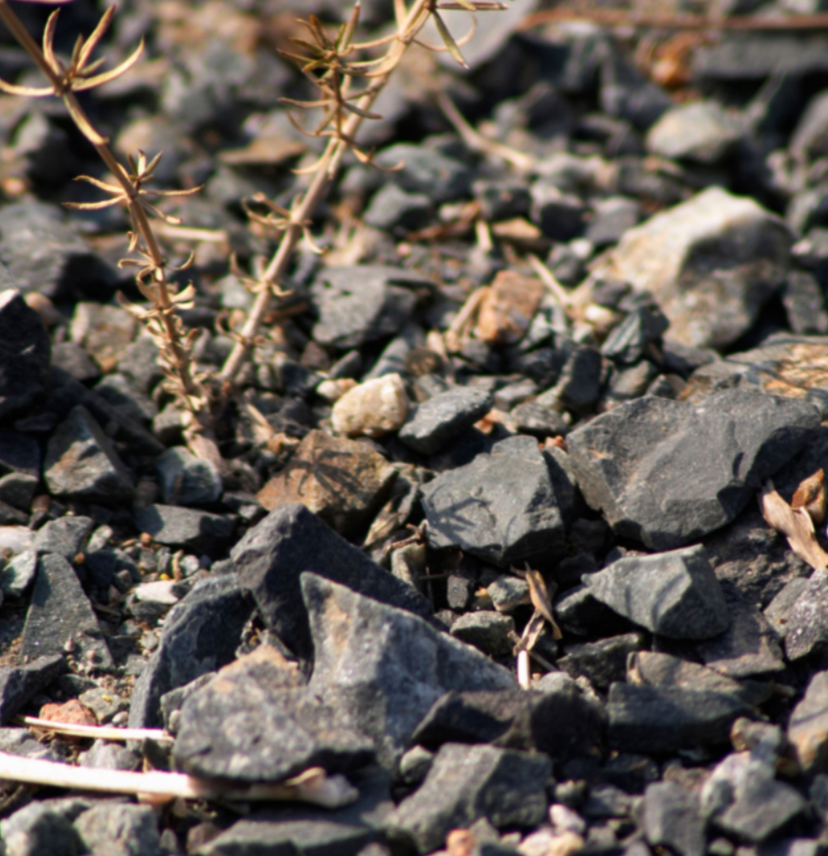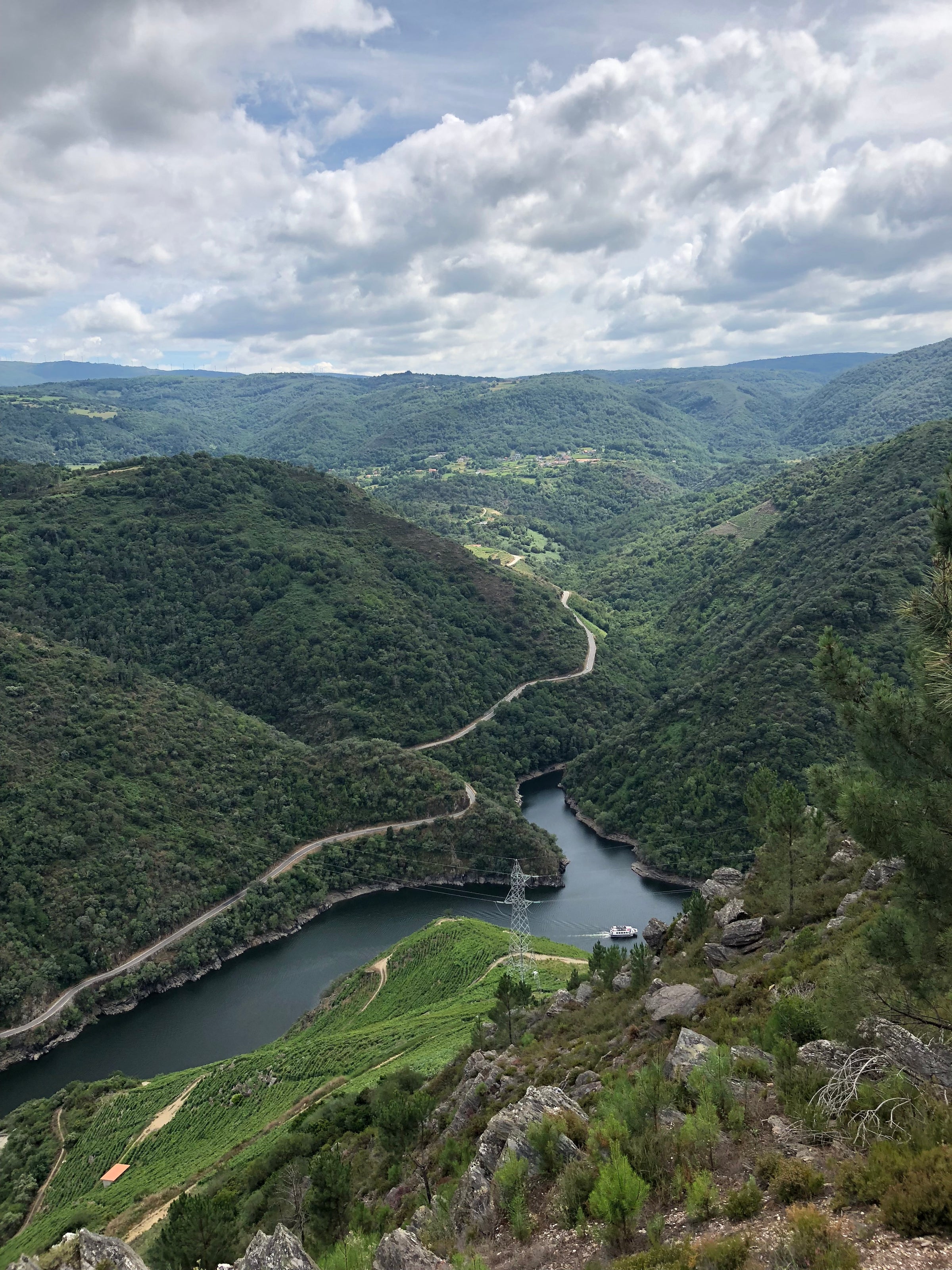As Galician red wines from the Mencía grape have become more popular, so has the go-to descriptor of these wines as being comparable to Loire Valley Cabernet Franc. I really don’t see it that way. If you want to name a French analog for Galician Mencía, I’d choose Côte-Rôtie or Cru Beaujolais—for me, it kind of feels like a hybrid of the two.
Galicia’s steep riverside terraces evoke those of Côte-Rôtie, as do its granitic soils, which are also found in many big-name villages of Beaujolais. But it’s not just the terroir that prompts these comparisons—it’s the wines. Today’s lively, mineral-etched red from the Ribeira Sacra DO would not be out of place in a Beaujolais
cru like Fleurie, but, Spanish-French comparisons aside, Benito Santos has crafted an inexpensive red wine that perfectly captures its place of origin: aromatic, energetic, brightly fruited, and of course, underpinned by mineral soil character. It’s one of those light reds of consequence, easy to drink but memorable, juicy but tactile (and sneakily serious). My first thought when I tasted this wine was that I wanted a case of it for my next barbecue. My second thought was that there’s more genuinely great wine to be had at the low end of the price spectrum than ever before. We’ve got it made!
And you’ve really got it made if you’re lucky enough to see Galician wine country with your own eyes. It's a powerful place, with cavernous river valleys blanketed in green running west to the Atlantic Ocean. This is the home of Benito Santos, a man who was known far and wide in Spain, most notably for his cultivation of Albariño in Rías Baixas—a coastal appellation he is credited with helping establish in the 1980s. Like other producers in Rías Baixas, producers strive to make red wines that gain the same attention as their Albariños, so Santos turned to Mencía. Rolling off the Spanish tongue, it is pronounced mehn-THEE-ah, but from Rías Baixas, it doesn’t always reach the same level as when it is grown further inland, in appellations such as Valdeorras, Monterrei, and especially Ribeira Sacra, the source of the fruit for today’s wine. Dizzyingly steep vineyards etched from slate and granite enjoy excellent drainage, and the influence of the Sil River helps mitigates daily high temperatures while providing frost protection. It’s a relatively long, cool growing season, which helps to concentrate flavors in grapes and produce wines of depth, precision, elegant fruit flavors, and fresh floral notes.
Today’s mouthwatering 2017 is 100% Mencía, harvested by hand in small, 25-pound picking bins. Once in the winery it is destemmed, gently pressed, and left to macerate for just over a week before fermentation and aging in stainless steel tanks. In the glass, the wine shows a pretty, dark ruby color nearing purple at the core and hinting at magenta around the edges. Aromas of wild berries, red currants, and fresh, just-picked wildflowers find cold forest floor notes; on the palate, the wine shows medium-plus body, lively and exotic spices tones with a lot of tension and freshness. With extremely ripe blueberry and boysenberry notes, there’s an impression of fruit sweetness, but the wine is bone dry, and it affects the palate like a Cru Beaujolais or Northern Rhône Cru, with great grip and an impressive thread of crushed stone and liquid slate minerality. Serve with a slight chill (55 degrees) and pair it with one of my favorite Spanish recipes: Asturian pork and beans stew. This is the perfect wine to stash away for the inevitable onset of cool autumn weekend days and eventual cold winter nights.





